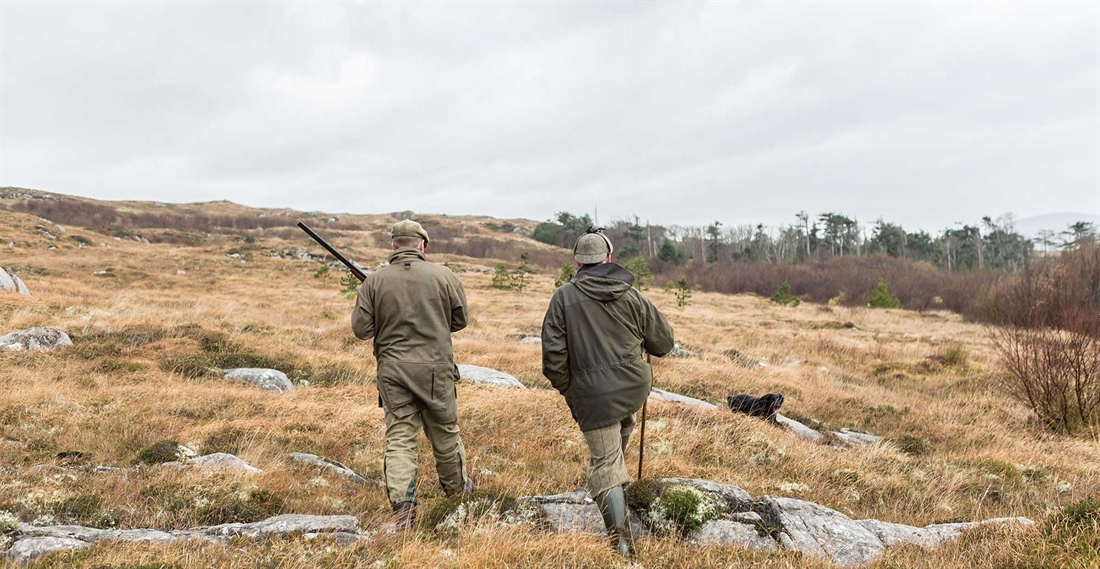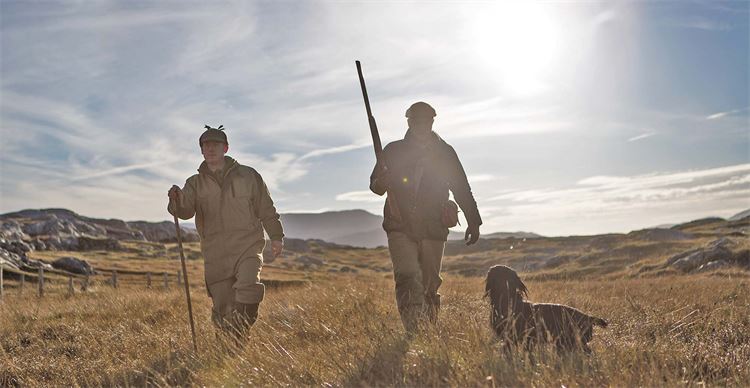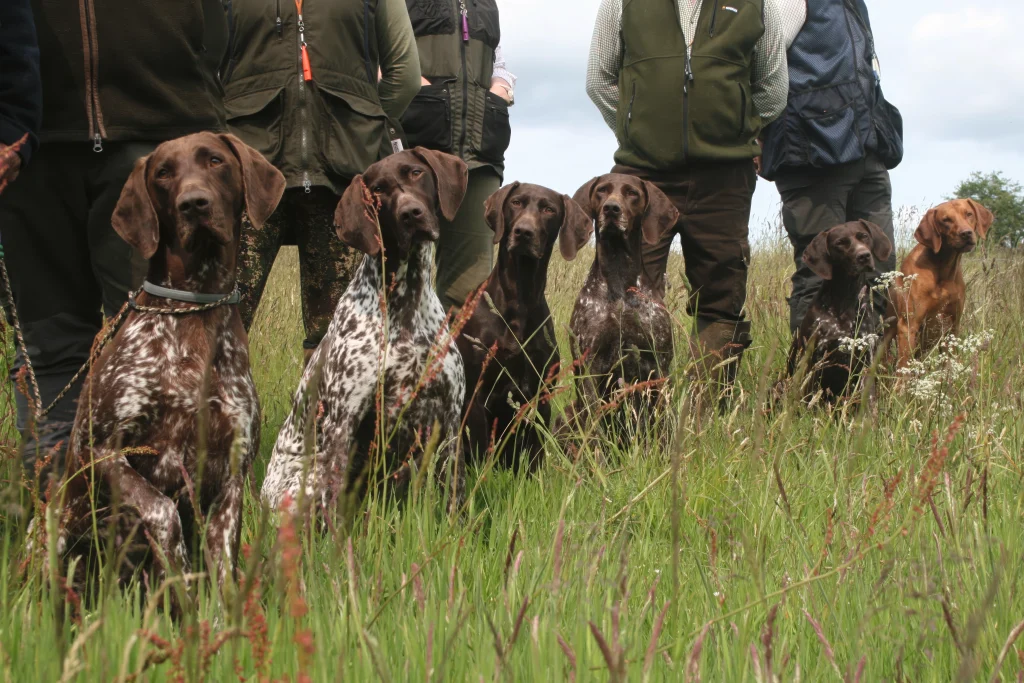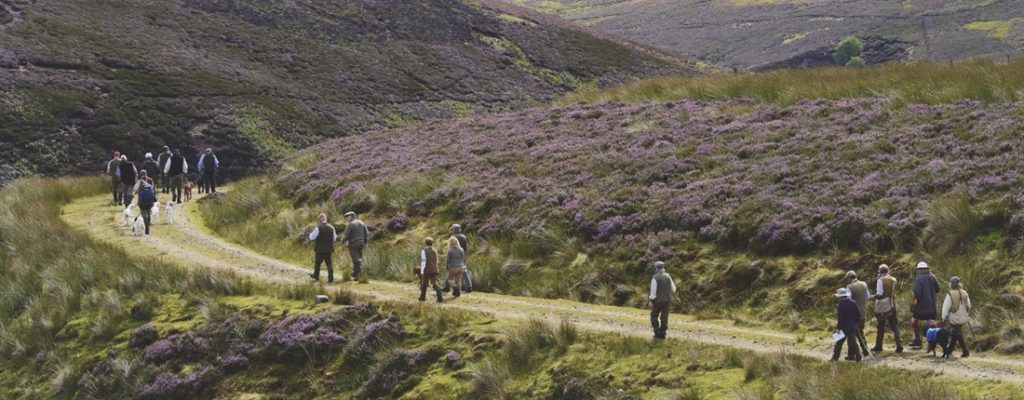Training beating line and walked-up sport gundogs
The sight of dog and Gun working together to put game in the bag is a joy to behold, but how does one achieve such a partnership?

Before taking the first steps towards acquiring a dog, the prospective owner will have – or should have – a good idea about what they want their dog to do when it grows up. The sight of a dog and Gun working together to put game in the bag is a joy to behold, but how does one achieve such a partnership without knowing the goal? For many, the end goal in choosing a gundog is typically:
- a peg dog
- a dog for picking up behind the Guns
- a dog that will perform steadily in the beating line or when walked-up shooting
Cross-over between the three is not rare. It is the last of these roles, though – the rough shooting dog for walked-up sport – that is the focus of this article. Walked-up shooting perhaps tests the togetherness of dog and handler more than any other form of shooting.
A well-trained dog is an invaluable asset when walking-up game. Just as a close-working, hard-hunting dog which is steady to flushing game and gunshot can enhance a day tenfold, so a dog not accustomed to this type of work can be more hassle than it is worth and counter-productive to a day’s sport.
Whereas a dog that is not 100 per cent steady can be on a lead on the peg during a drive, and a picking-up dog can range a little further than expected without too much consequence. One that is not well drilled when it comes to rough shooting can be of real detriment to the success of an outing.
My aim here is to outline the key points worth bearing in mind, both when training a dog for walked-up shooting and when handling it and shooting over it later on.
Which Beating Dog Breed Is The Best?
Whilst it would be unwise to entirely rule out other breeds for walked-up shooting, it is no secret that, for the most part, this is spaniel territory. That said, I have seen other breeds perform the task very well. HPR breeds, for example, can be very effective.
Personally, I like to share responsibilities between my labradors and spaniels. The spaniels will hunt for game whilst the labrador walks to heel. Once a bird is flushed and shot, both will be sat and I can choose whether to send the labrador or the spaniel for the retrieve, depending on which was in the best position to mark the fall, or which needs to improve on a particular aspect of his/her work.
Steadiness Is Key In Walked-Up Shooting
If your dog is well versed in steadiness, you will be halfway to producing the perfect companion for walked-up shooting. An unsteady dog will be hunting out of range before you know it, flushing birds out of shot and spoiling sport for you and any fellow Guns.
Steadiness means resisting temptation, this might mean:
- leaving a flushed hare
- not running in to retrieve a shot bird with no command
- refraining from pulling away from the handler on an interesting scent
Training exercises can be set up to teach your dog to cope with temptation – leaving a bowl of food, sitting while dummies are thrown, watching other dogs making a retrieve, or walking to heel through a pen-full of poults, for example.
Steadiness, as with all aspects of gundog training, is best established incrementally. Start with simple exercises and build up levels of temptation in your training slowly, only moving on when the dog is absolutely steady at the previous stage. Patience pays dividends.
Cover Types
It is important to introduce your dog to a variety of cover types in training. After all, everything from brambles and sugar beet, to reeds and heather might be encountered on a day’s walked-up shooting.
Begin with short, rough grass where your dog will be able to find tennis balls or canvas dummies with relative ease. Remember the wind direction, and use it to help your dog pick up the scent. The aim is to build confidence, so set up situations in which your dog is likely to find whatever he/she is hunting for.
Progress into cover which is a little thicker only once your dog is happy hunting and retrieving in lighter vegetation. But don’t overdo it, especially in brambles or thorns where a dog can quickly go off the idea of hunting for no reward.
Gundog Hunting Style
From an early age, you should have encouraged your dog to stay close to you as it hunts, strategically placing dummies and balls near your feet which the dog will find as it quarters. Indeed, from day one it is wise to keep on top of dogs when they are hunting so that they do not get a taste for ignoring you and end up entertaining themselves.
The way in which a dog hunts is quite important to the walked-up Gun. Chances can be few and far between for this type of sport, and sizeable areas might be covered in search of a small bag over the course of a day. Therefore, a dog must be thorough when hunting and cover the ground well, or birds may be missed. A certain amount of fieldcraft on the handler’s part is required here, too.
- Don’t waste your dog’s energy directing him or her to hunt areas that are unlikely to hold game, but allow the dog to use its nose. Work together as a team.
- Too much whistle work will bore the dog, so don’t nag it. There must be an element of trust, on both sides.
With experience, dogs learn to pace themselves for a full day’s work. Choice of breed and breeding come into play here, and a good engine is essential, so be sure not to neglect your dog’s fitness work in the off-season.
Working Scenarios
There are so many scenarios you might encounter on a day’s rough shooting. Practise retrieving exercises in various vegetation, different types of areas, and in all types of weather. Some of the best scenarios you can start with are walk-ups in:
- Ditches and small descends
- Over obstacles such as fences
- Exercises where the dog encounters various types of cover within a space of 50 yards, e.g. being sent for a retrieve from an open field into woodland, or vice versa.
- Hedgerows can be problematic as they are likely to hold game but can encourage a young dog to pull on and take a direct line away from you.
Avoid hunting your dog along with them until it is more experienced in other cover types, and keep changing the direction of work when you do, stopping your dog and recalling, to keep it from developing this habit.
Leave The Gun At Home
It is not uncommon to see a lot of good work in the training field undone or jeopardised by a poor approach to the real thing. I’d recommend leaving the gun at home the first time you take your dog on a walked-up day. This will enable you to concentrate on your dog’s hunting, steadiness to flush and retrieving. I see far too many handlers getting wrapped up in the excitement of shooting, and all of a sudden their dog is charging off to retrieve a bird or is continuing to pull on ahead, flushing other birds as it goes.
You will have taught your dog that not everything that is shot is his or hers to pick up, so this expectation will have been managed as your dog has matured. Continue with the same attitude adopted during training. Ensure your dog stops every time you ask it to, and to start with do not be tempted to send it for a retrieve you know it has not marked in thick cover.
Only once you are happy that your dog is performing in the shooting field as he does in the training paddock, should you consider taking your gun with you.
Shooting Over Your Dog
As with all forms of shooting, safety is paramount when shooting over dogs. The quarry will typically fly away from you when it is flushed, so quick reflexes and the ability to judge range accurately are necessary.
I tend to walk with my gun broken with cartridges in the chambers, and, because my dogs work close to me, I will have sufficient time to close the gun, mount and shoot as and when the quarry is flushed.
Most people, however, choose to walk with their guns closed with the safety catches on, which is fine, as long as the barrels are pointing safely skyward – not towards the ground (and hence, the dogs).
Finally, if you’re not happy that your dog has listened to you, honoured the flush or marked a flushed bird properly, don’t feel obliged to pull the trigger. For me, honing the skills of a trustworthy, efficient working partner is worth far more than another bird in the bag!
For more tips on gundog handling, sign up to our newsletters or subscribe to Gundog Journal, and make sure to pay a visit to our author from Beggarbush Gundogs.
Related Articles
Get the latest news delivered direct to your door
Subscribe to Gundog Journal
Unlock the full potential of your working dog with a subscription to Gundog Journal, the UK’s only dedicated magazine for gundog enthusiasts. Published bi-monthly, this authoritative resource delivers expert training advice, in-depth interviews with top trainers and veterinary guidance to help you nurture a stronger bond with your dog.
With stunning photography and thought-provoking content, Gundog Journal is your essential guide to understanding, training and celebrating your working dog.
Save 10% on shop price when you subscribe, with a choice of packages that work for you. Choose from Print & Digital or Digital only with each journal delivered directly to your door or via the app every other month, plus access to past issues with the digital back issue library.








